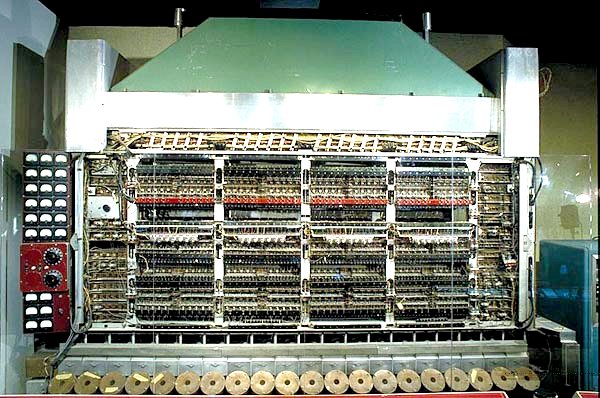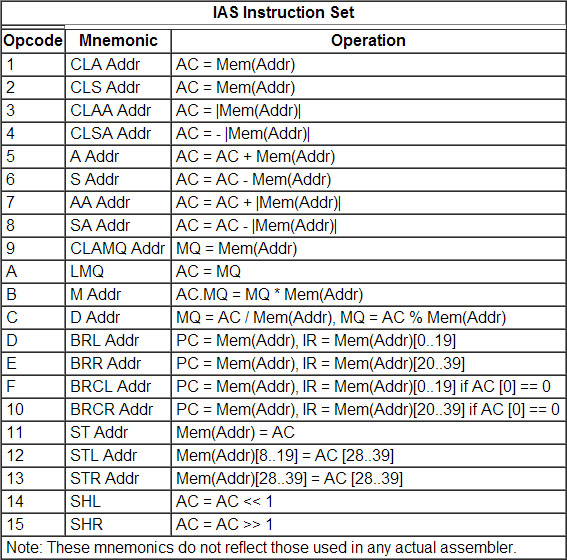IAS Computer
General
- The IAS computer was named for the Institute for Advanced Study in Princeton, N.J., where it was developed.
- Work on the IAS was begun in 1946 and completed in 1952.

Architecture
- The IAS computer was the first to store the program in the same memory as the data.
- The logic of the IAS machine was implemented with vacuum tubes.
- The memory of the IAS machine was implemented with cathode ray tubes.
- The word size is 40 bits.
- Memory is word addressed (not byte addressed.)
- Numbers were stored as fractions, not as integers.
- The distinction between fractions and integers only affects multiplication and division.
- Instructions are fixed size (20 bits), with a single address, stored 2 per word.
- 8 bits are allocated for the opcode, allowing 256 different operations; only 21 were implemented.
- 12 bits are allocated for the address, allowing a memory space of 4096 words; IAS was built with only 1024 words of memory.
Opcode |
Address |
Opcode |
Address |
- Two instructions are fetched at once.
- The IAS has 5 separate parts:
- CA, the Central Arithmetic part
- CC, the Central Control part
- M, the primary Memory part
- I, the Input part
- O, the Output part

- R is an external Recording medium.
- IAS has 7 registers, 2 of which can be addressed by instructions:
- Architectured Registers
- AC, the Accumulator (40 bits)
- MQ, the Multiplier/Quotient register (40 bits)
- Implemented Registers
- MDR, the Memory Data Register (40 bits)
- IBR, the Instruction Buffer Register (40 bits)
- IR, the Instruction Register (20 bits)
- PC, the Program Counter (12 bits)
- MAR, the Memory Address Register (12 bits)

Instruction Set






